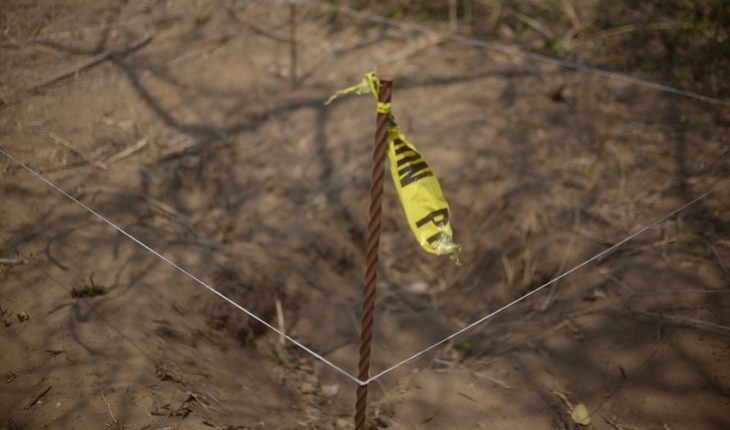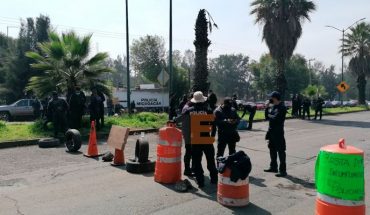In only six municipalities in the country, 52.8% of the bodies exhumed in clandestine graves have been found between 2009 and 2014.
This is Durango, Durango; San Fernando, Tamaulipas; Acapulco and Taxco de Alarcó, Guerrero; La Barca, Jalisco, as well as Ciudad Juarez, Chihuahua, where 749 bodies of 1,418 were exhumed that recorded the investigation Violence and Terror. Findings on clandestine pits in Mexico, published by Universidad Iberoamericana, the Mexican Commission for the Defense and Promotion of Human Rights and Article 19.
Mexico, the country of clandestine graves: in 11 years add almost 2 thousand findings, reveals research
Although the research was based on hemerographic data, as well as figures from state and federal governments between 2006 and 2017, for municipalities, data were taken only between 2009 and 2014.
In only six municipalities in the country, 52.8% of the bodies exhumed in clandestine graves have been found between 2009 and 2014.
In Durango’s case, it concentrated 21% of the total exhumed bodies, while San Fernando had 12%.
“If we count the total number of bodies exhumed exclusively in 2011, i.e. 588, it means that two municipalities in the country concentrated 80.27% of the total for that year. This helps to identify in terms of pits, a particularly high degree of violence in these two entities of the country during that year,” details the report presented on Wednesday, June 19.
In the case of the other four municipalities indicated, the document details, they also help to identify patterns of violence.
For example, the cases of Acapulco de Juárez and Taxco de Alarcón, where the appearance of graves has been a constant, “contribute to sizing that in fact, this has been one of the most violent regions in the country in recent years”.
According to the investigation, the case of La Barca, in Jalisco, corroborates the map of the underground graves of 2013 and 2014, as it “shows the behavior of a more marked violence so that the western region of the country, while in the northeast and northwest of the country is by the ca Juarez, Nuevo León, particularly accentuated in 2010 and 2011.”
Mothers find a pit with 500 bodies in Tamaulipas; accuse authorities of concealing information, but prosecutor’s office denies it
The study indicates that between 2009 and 2014 390 clandestine graves with 1,418 bodies and 5,786 remains were found in 23 states of the country, meaning that in each state “at least one clandestine pit was recorded during the six-year period that covered the registration of the journalistic in the database.”
In the same period, Guerrero was the entity that concentrated the largest number of pits, followed by Jalisco, Chihuahua, Coahuila and Tamaulipas; five total 62.56% of the total.
Violence and terror: finds on clandestine graves in Mexico 2006-2017
The research notes that 2011 was the year with the highest number of graves reported by the media, with 143.
As for bodies exhumed in the designated period (1,418), Durango was the entity with the highest number –although it is not among the states with the most pits – followed by Guerrero, Tamaulipas, Jalisco and Chihuahua; all five states concentrated 71.01% of the total.
Authorities locate at least 36 clandestine graves on a Veracruz site
Although the research details that the extent of clandestine burial in Mexico is not yet known exactly, there are patterns and approaches to consider, such as the coincidence between the results of the study with other indicators of violence in the country.
“If we look at the trend of homicides in the country from 2008 to 2015, it is possible to appreciate the symmetry between them with the reporting of clandestine graves in the country during the period investigated,” he explains.
As with the killings, the report notes that the discovery of clandestine graves also shows a link to the rate of missing persons.
“This development coincides with the increase in 2011 of violence spikes and their relationship to the findings of graves, homicides and lost or missing persons recorded in the National Registry of Lost or Missing Persons (RNPED). However, the appreciable difference is that cases of disappearance continued to increase in 2013 and 2014, unlike homicides and graves,” he says.
How do you find Veracruz for your missing? Your local commission suffers by budget and has no offices of its own
Among its findings, the research detects two key patterns in the discovery of clandestine pits: the constant presence of graves in certain municipalities, in addition to increases in certain years, and a high number of graves, bodies and/or remains exhumed in states where there was significant violence in a specific year, as well as the possible combination of these variables.
It also points to the problem that not all state prosecutors or prosecutors provide reliable information on pit findings, so it makes two hypotheses: that not all local authorities are concerned with registering and systematizing information, or that they have data, but decides not to provide it.
Thanks for reading! Help us get on with our work. How? You can now subscribe to Political Animal on Facebook. With your monthly donation you will receive special content. Find out how to subscribe here. Check out our list of frequently asked questions here.
translated from Spanish: 6 municipalities concentrate 52% of bodies found in pits
June 20, 2019 |





